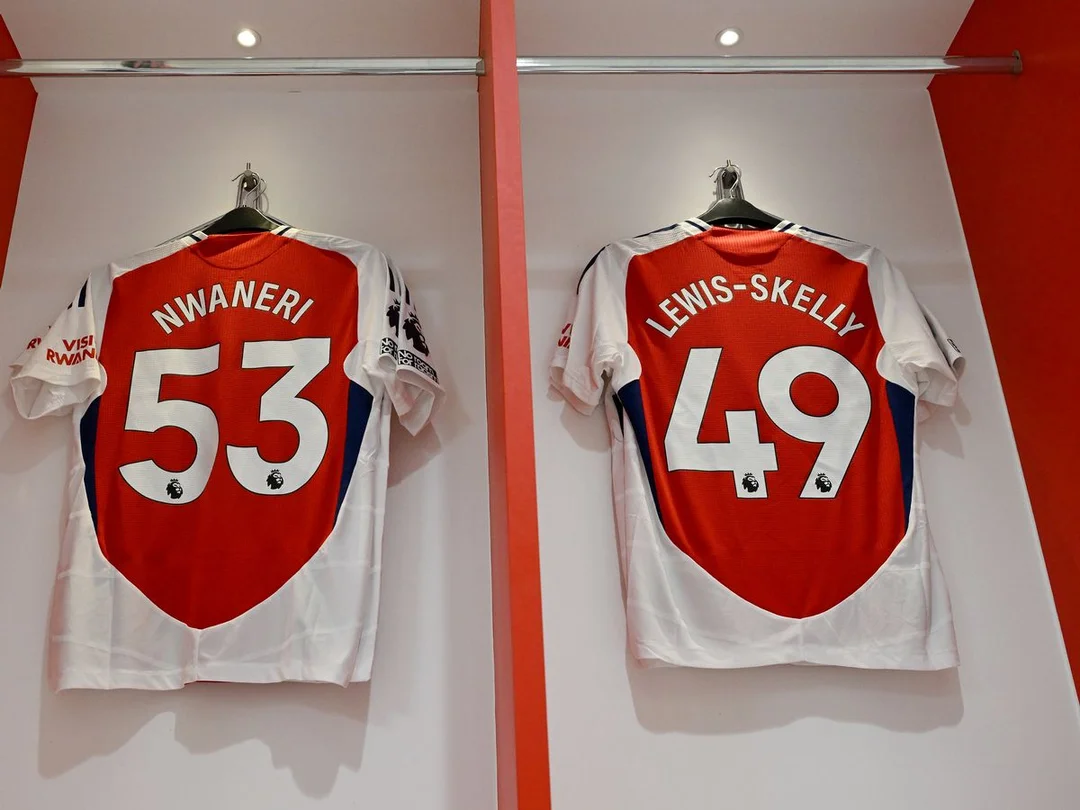
What Do Arsenal’s New Squad Numbers Reveal About Their Future?
As the excitement builds for the upcoming 2025/26 football season, Arsenal's squad number changes have prompted discussions that go beyond mere aesthetics. Key players like Ethan Nwaneri and David Raya have swapped shirts, reflecting both their evolving roles within the squad and the club's future aspirations.
Ethan Nwaneri, who has made headlines as one of the Premier League's youngest players, has moved from the number 53 to the coveted number 22. This change signifies his established position in the first team, despite a drop in playing time towards the season's end. Mikel Arteta, Arsenal’s manager, commented on Nwaneri’s situation, emphasizing that while his minutes have decreased, his contributions have exceeded expectations. Having made his debut at just 15 years old wearing the extraordinary number 83, the progression to the more traditional number 22 reflects his growth and importance to the team.

In tandem with Nwaneri's change, goalkeeper David Raya has taken the long-standing number 1 shirt, a clear indication that he has cemented his status as Arsenal’s first-choice keeper following his transfer from Brentford. This historic number has been worn by club legends like David Seaman and Petr Cech, adding an extra layer of responsibility and expectation to Raya’s game. His transition reflects a broader strategy from Arsenal to ensure stability in key positions as they aim for greater success.

Interestingly, Myles Lewis-Skelly has elected to keep his number 49, which has become synonymous with his emergent identity among fans. This decision has sparked speculation regarding its significance, especially given that the number celebrates Arsenal’s unbeaten streak from 2004-2005. The emotional connection between the players and their numbers often strikes a chord with fans, making such choices symbolic of their journeys within the club.
The unveiling of the new home kits also aligns with the club's strategy to reinvigorate their identity and engage a new generation of supporters. With several clubs, including Chelsea and Manchester City, also revealing their latest designs, Arsenal’s fresh kits are attracting attention and showcasing the visual aspect of football that fans passionately embrace.
As the squad prepares for the 2025/26 season, these changes in numbers hint at a broader narrative about the club's objectives. Will Nwaneri's rise to prominence complement Raya’s established presence in goal? Could these young talents be the cornerstone of a successful campaign? As Arsenal fosters a culture of nurturing youth, only time will tell how these squad number changes will translate on the pitch.
In conclusion, the significance of squad numbers at Arsenal extends well beyond player preferences; they are intertwined with history, emotions, and aspirations for the future. Fans are encouraged to share their thoughts on these changes and what they predict for the forthcoming season.